

Apr 13, 2023
TECH & DESIGNDENSO carbon neutrality solutions: supporting factory decarbonization
A report on the GREEN FACTORY Expo, which brings together solutions related to hydrogen, CO₂ and manufacturing equipment
Efforts toward carbon neutrality are gaining momentum on a global scale.
To this end, carbon recycling has become an important measure at factories everywhere, and many people are coming up with innovative solutions.
We report on DENSO Corporation’s booth at the first GREEN FACTORY Expo in Tokyo, which showcased a number of effective ways of realizing factories decarbonation.
Contents of this article
Contributing factory decarbonization
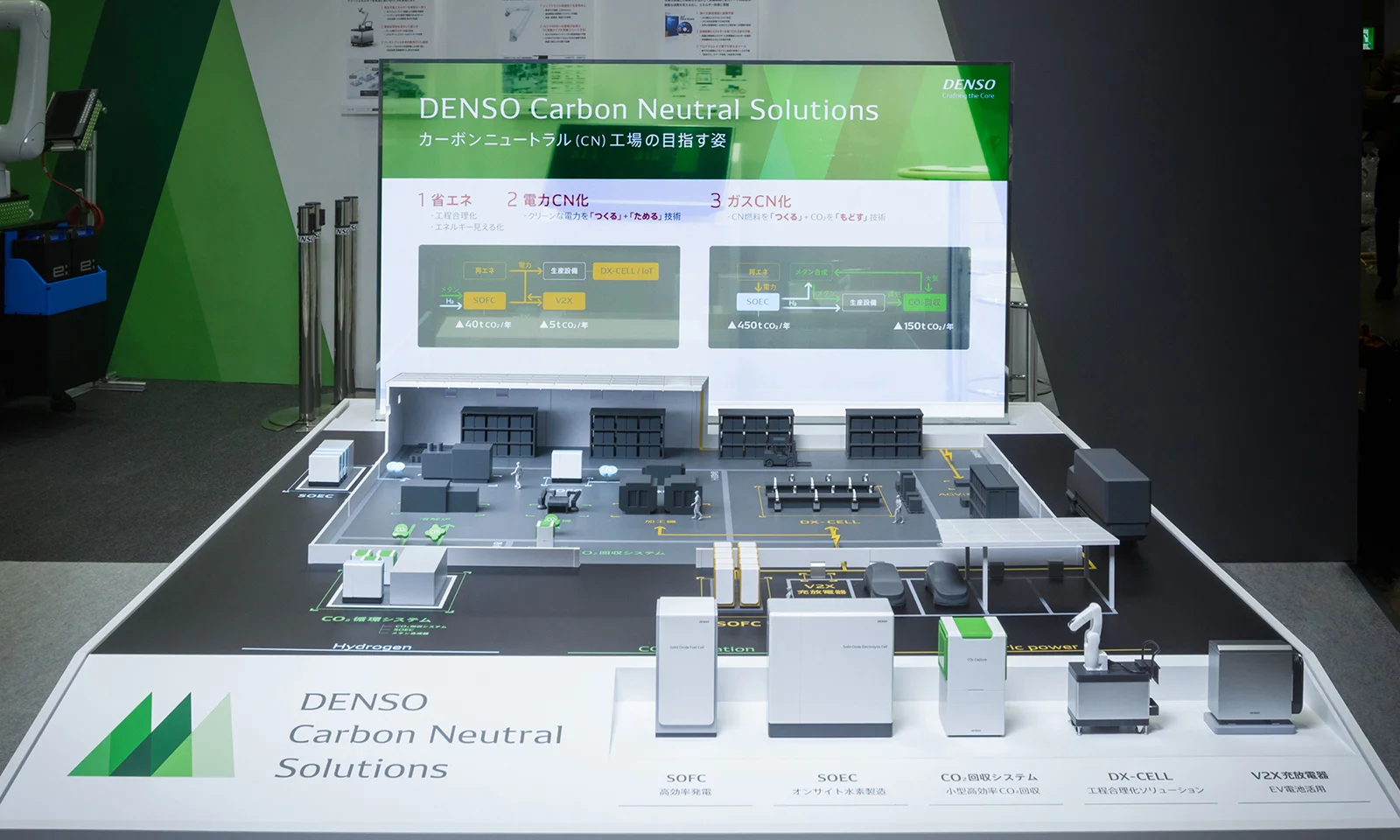
In order to achieve carbon neutrality in factory operations, it’s necessary to reduce the total amount of energy used, replace fuel-based energy sources with electricity generated using renewable energy, and use carbon-neutral fuels in place of gas fuels for which electrification is not possible.
At the GREEN FACTORY Expo, visitors could see a wide range of technologies designed to realize carbon neutrality firsthand and together in one place, such as factory energy management systems, technologies for visualizing CO2 emissions and energy usage, renewable energy technologies, energy-saving devices and equipment.
DENSO’s booth showcased manufacturing-related products, such as a CO2 capture system, a CO2 recycling system, solid oxide fuel cell (SOFC) and solid oxide electrolysis cell (SOEC) systems, and the DX-CELL platform. Despite being developed by different divisions and departments throughout the company, all of these were brought together based on the shared goal of carbon neutrality.
Tatsuya Yoshida of the Environment Neutral Systems Development Div., who was in charge of DENSO’s booth at the exhibition, explained the company’s goal for the event:
“Our booth brought together products which contribute to achieving carbon neutrality in factories in cooperation with the Production Engineering Div., which had been involved in products development for factories.
Although various products are on display, customers don’t have to introduce all of them in their factories at once to pursue carbon neutrality there. We hope to talk with customers about the most effective way to introduce the products in their factories depending on their needs, such as single unit introduction, multiple unites introduction in combination and sequential introduction.
Our goal to exhibit our products here at the exhibition is have opportunities to further refine our products to make them more useful to customers, for example how visitors respond to our suggestions.”
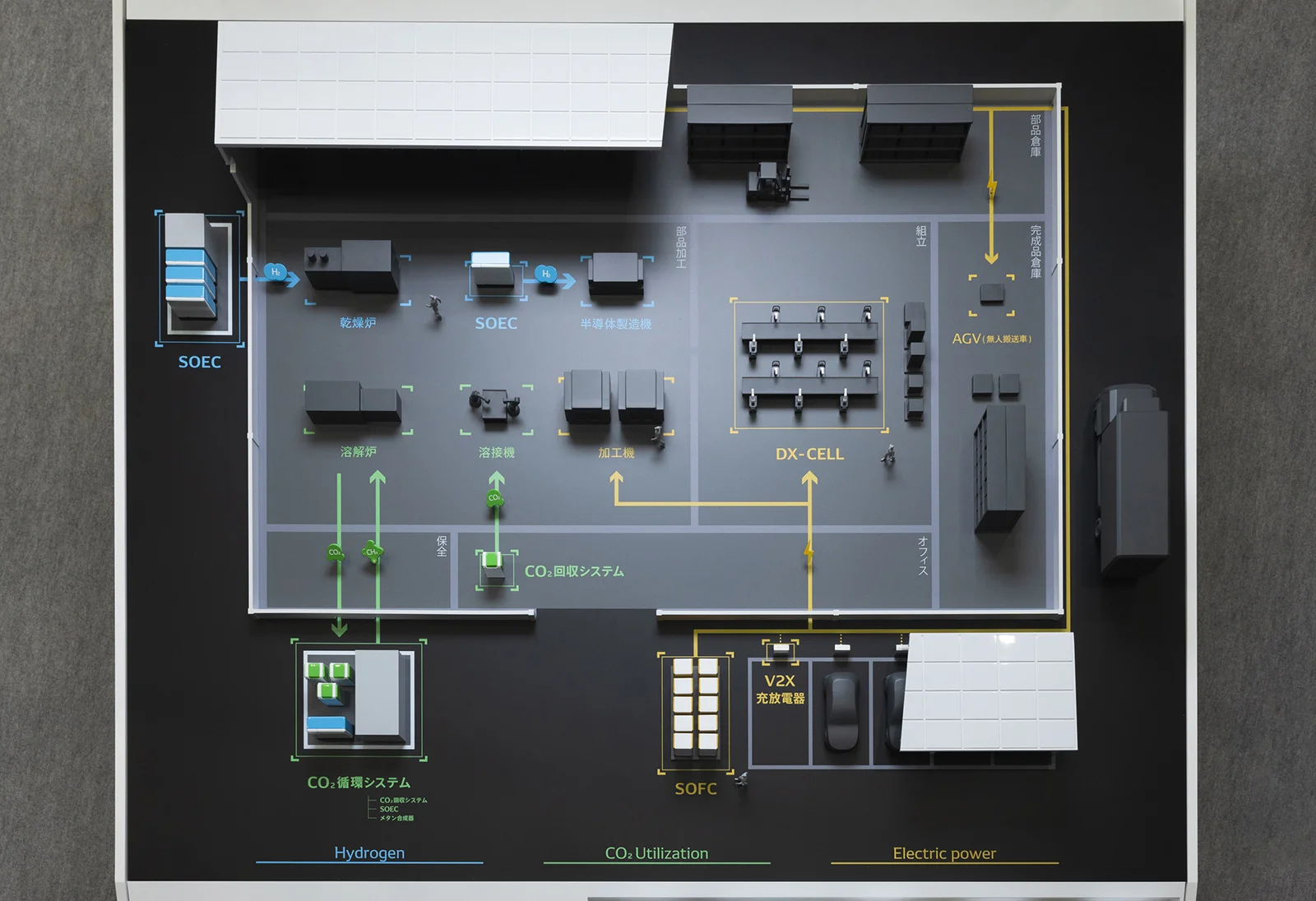
Here is the picture of a model which simulates an example of the layout of DENSO products within a factory, with explanations of how each product type contributes to carbon neutrality. Blue lines represent hydrogen, green lines show CO2 use, and yellow lines are electric power flows.
The parking lot on the bottom-right is for reference to see how much space the equipment requires.
DENSO products designed to make factories carbon-neutral
Let’s take a look at the various products showcased by DENSO at the GREEN FACTORY Expo, starting with those which utilize and control CO2.
CO2 capture and recycling systems to promote in-factory carbon recycling
Capturing CO2
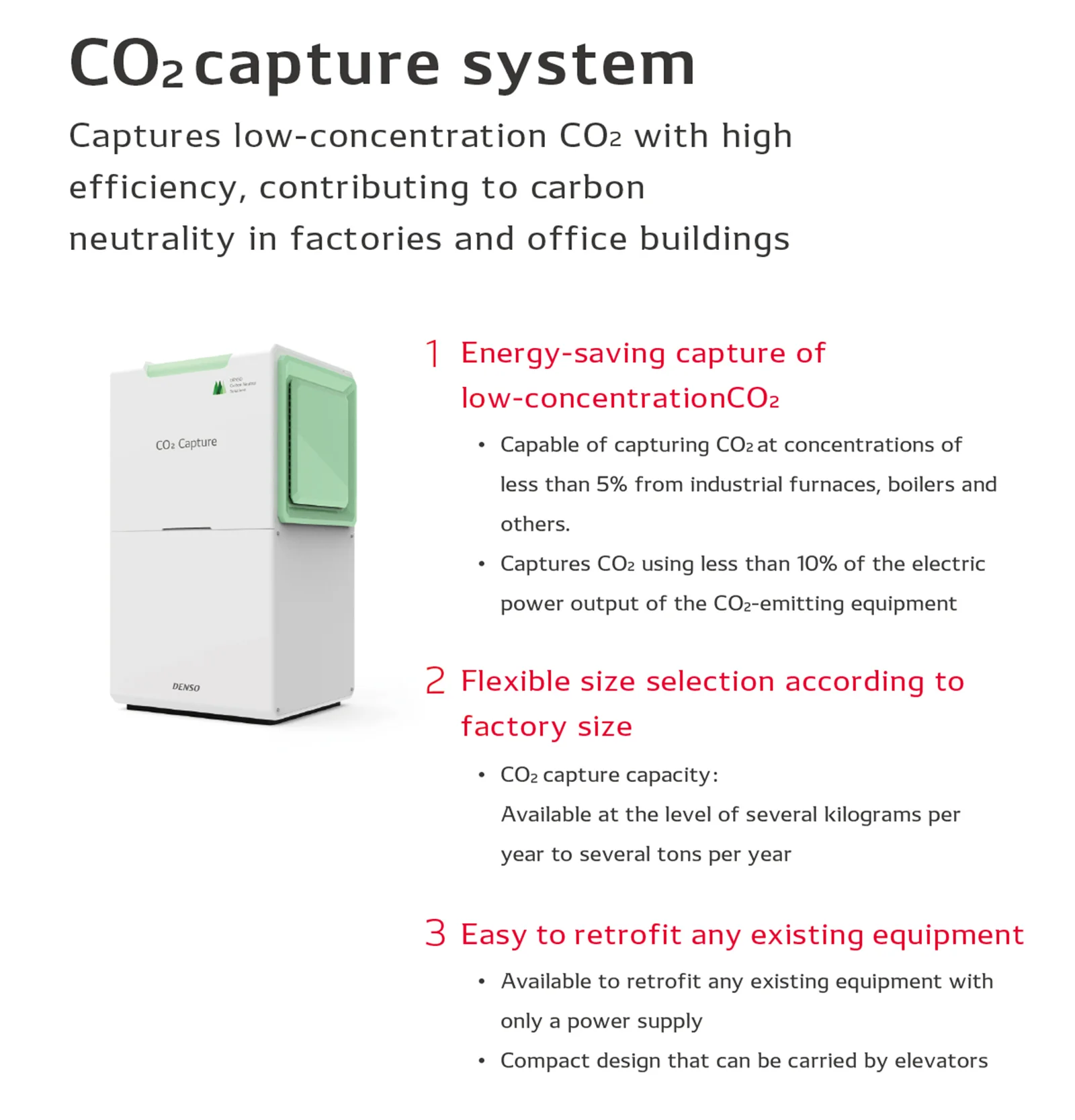
DENSO is currently developing a CO2 capture system that captures CO2 emitted by factories. Kenji Tani, also from the Environment Neutral Systems Development Div., described the advantages of this system:
“DENSO’s CO2 capture system offers the advantage of being easy to install anywhere. When introducing new equipment into a factory, ease of installation is a must.
Our system can capture CO2 as long as it is connected to a power source, and it is small enough to fit inside an elevator for transport, so it can be installed almost anywhere, even on the factory roof.
By introducing this system in stages, we hope to make CO2 capture more widespread throughout society.”
Captured CO2 can be used for various applications, such as for welding, for producing methane with hydrogen, and as a material like resins.
CO2 recycling
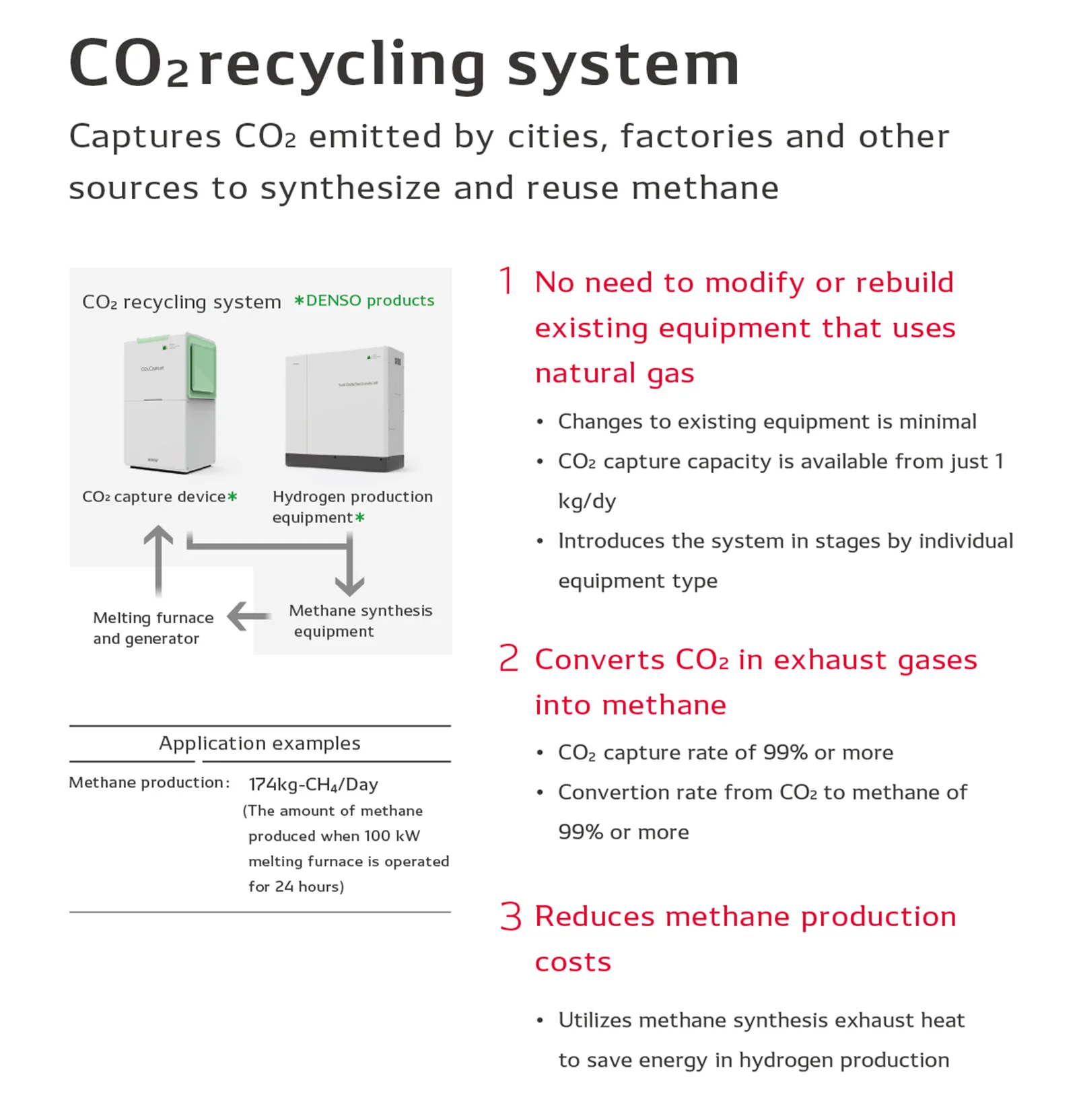
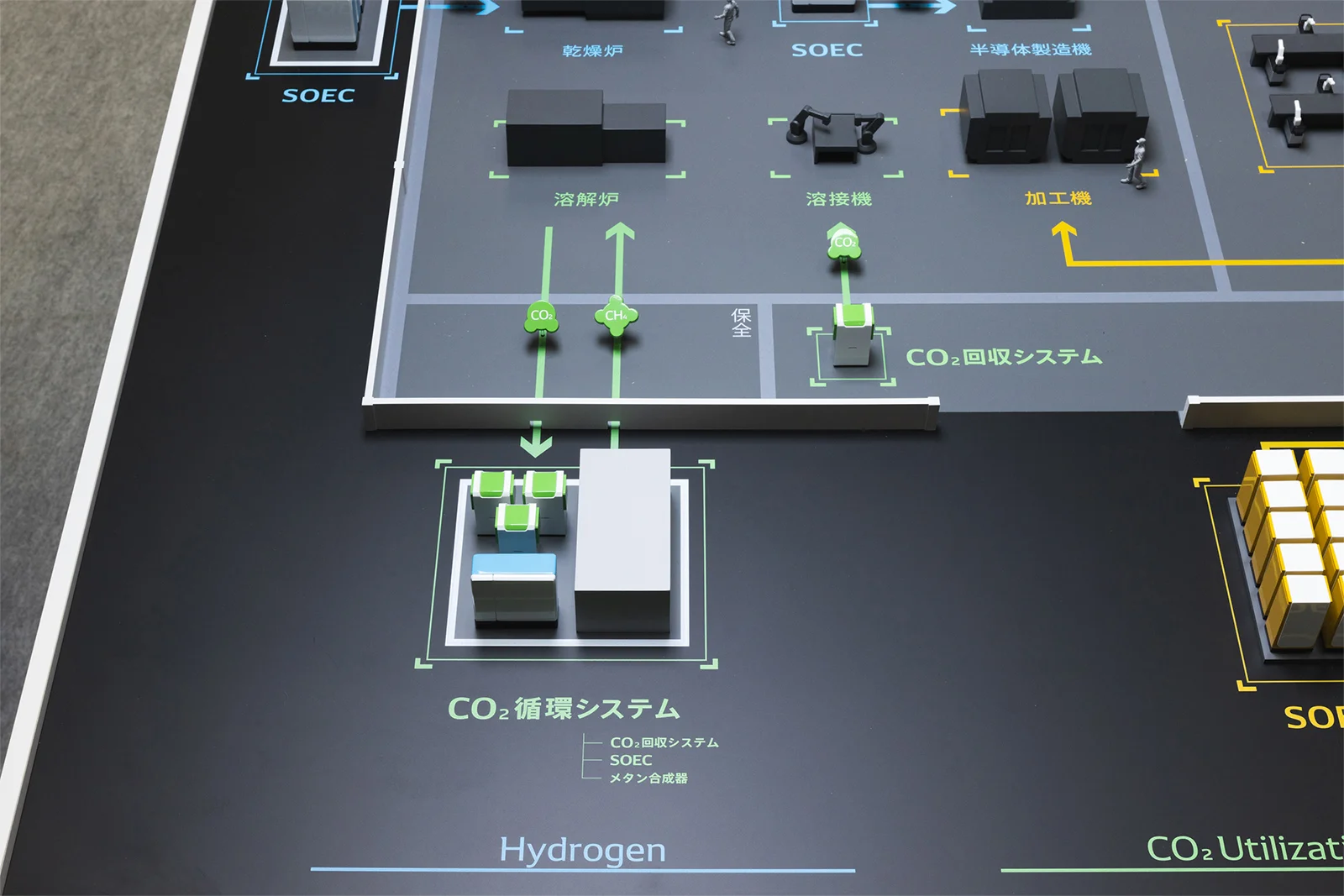
In addition to the CO2 capture system, we also show our customers the concept of the system to promote the CO2 recycling.
Based on the company’s future vision for society, Shinya Sakaguchi, another member of the Environment Neutral Systems Development Div., talked about how we should utilize captured CO2.
“Converting captured CO2 into methane makes it possible to utilize existing infrastructure for natural gas to carry the methane. It is important to reduce the investment cost of new equipment and infrastructure for the decarbonized fuels in order to achieve the carbon neutrality.
However, it’s difficult for a single company to build and operate the CO2 recycling system alone, and there are many cases where it is necessary to cooperate with other companies. For example, we may capture CO2 at our own plant, and then outsource hydrogen production and methanation (the synthesis of methane from CO2 and hydrogen) to other companies.
We ran a booth at this exhibition not only to introduce our products, but also to convey that we would like to work on the carbon neutrality together with a wide range of organizations by sharing our vision of CO2 recycling system.”
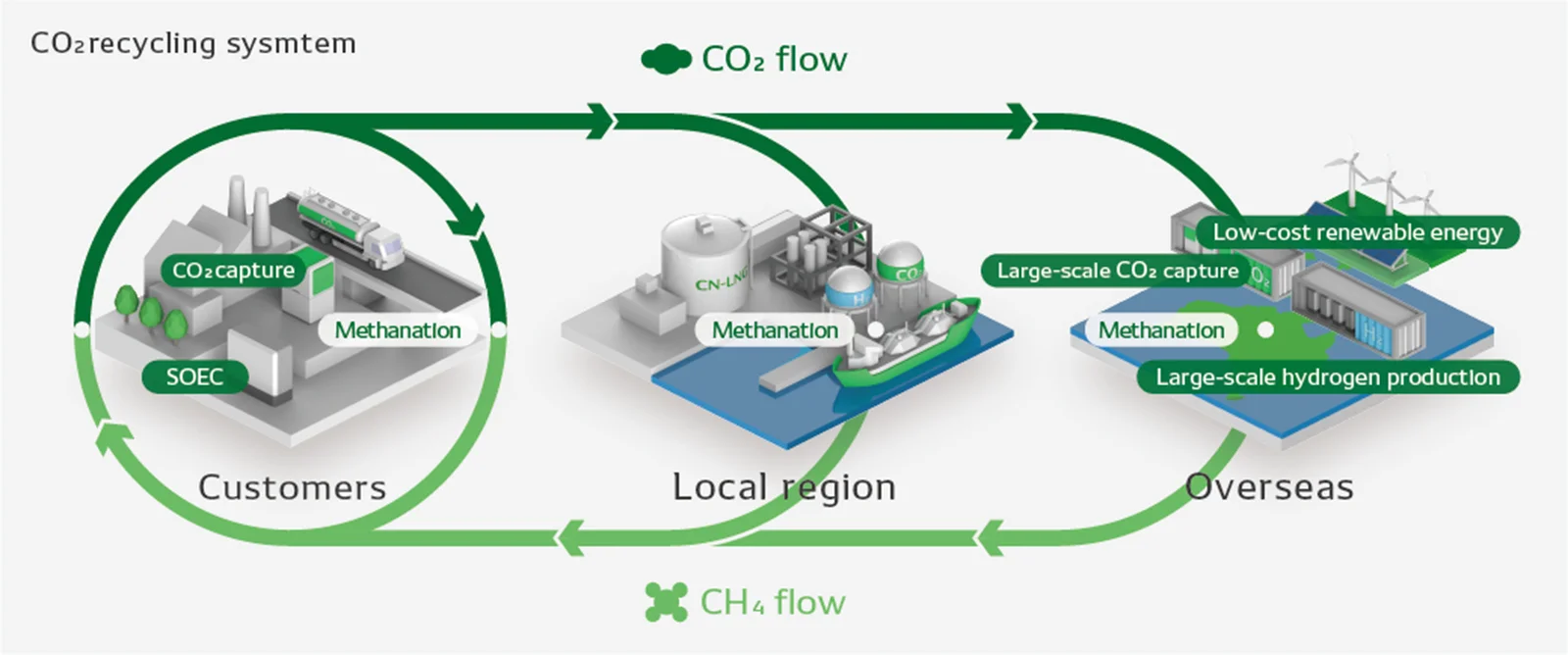
To learn more about DENSO’s approach to and plans for CO2 recycling, read the following article:
CO2 captured by DENSO’s CO2 capture systems can also be used together with hydrogen. Let’s explore how this works in factories.
Water electrolysis system and fuel cells promotes the utilization of hydrogen
Producing hydrogen in factories
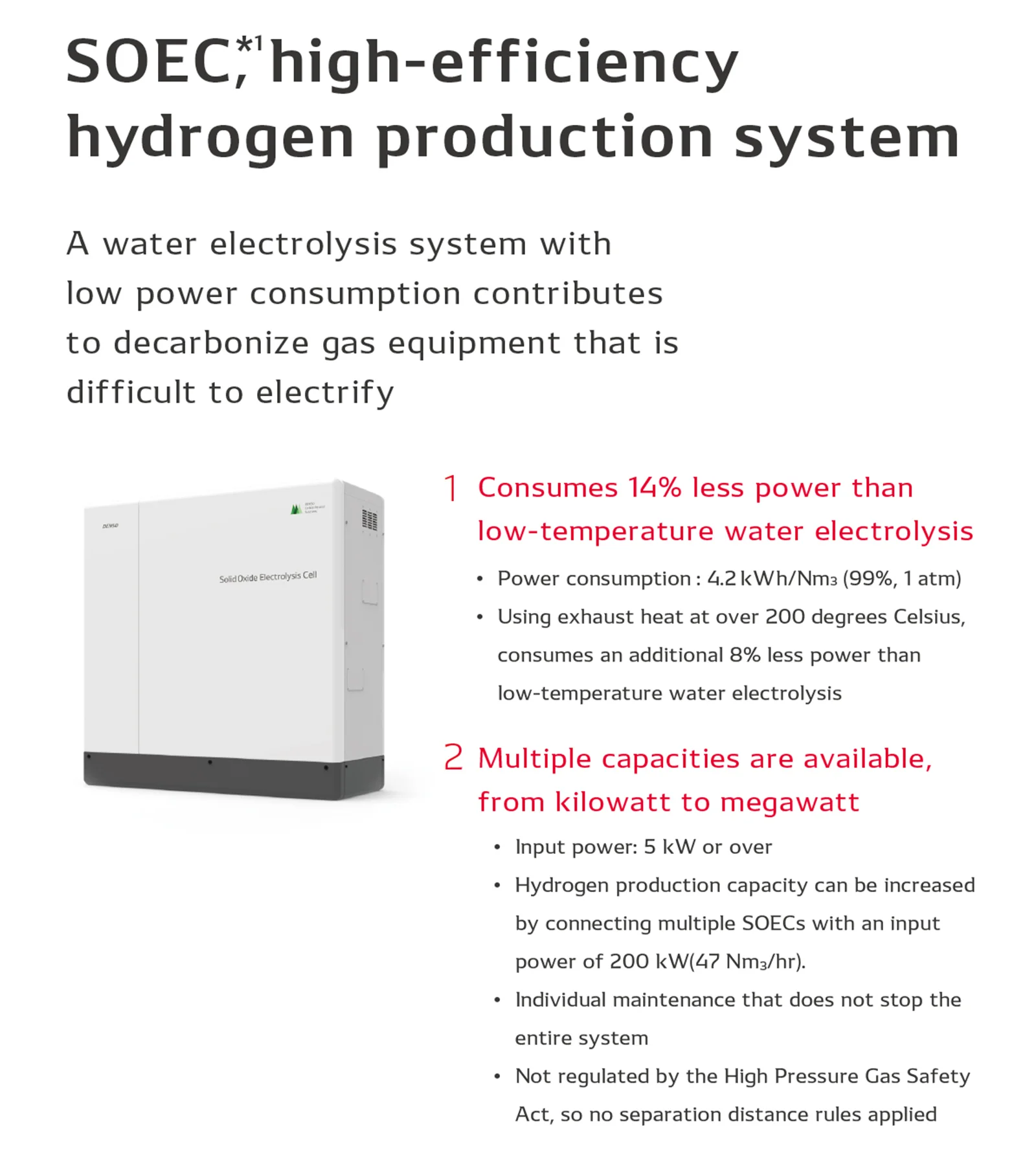
Atsushi Nakajima, who has been developing DENSO’s solid oxide electrolysis cell (SOEC) system to produce hydrogen using water and electric power, described the company’s aims to exhibit the product at this exhibition.
“DENSO’s SOEC system produces hydrogen with a very high efficiency.
At our booth, we also set up a model showing a typical layout of SOEC equipment within a factory so that visitors could better understand our approach. We want to learn about customers’ concerns when considering the introduction our SOEC system into their facilities.”
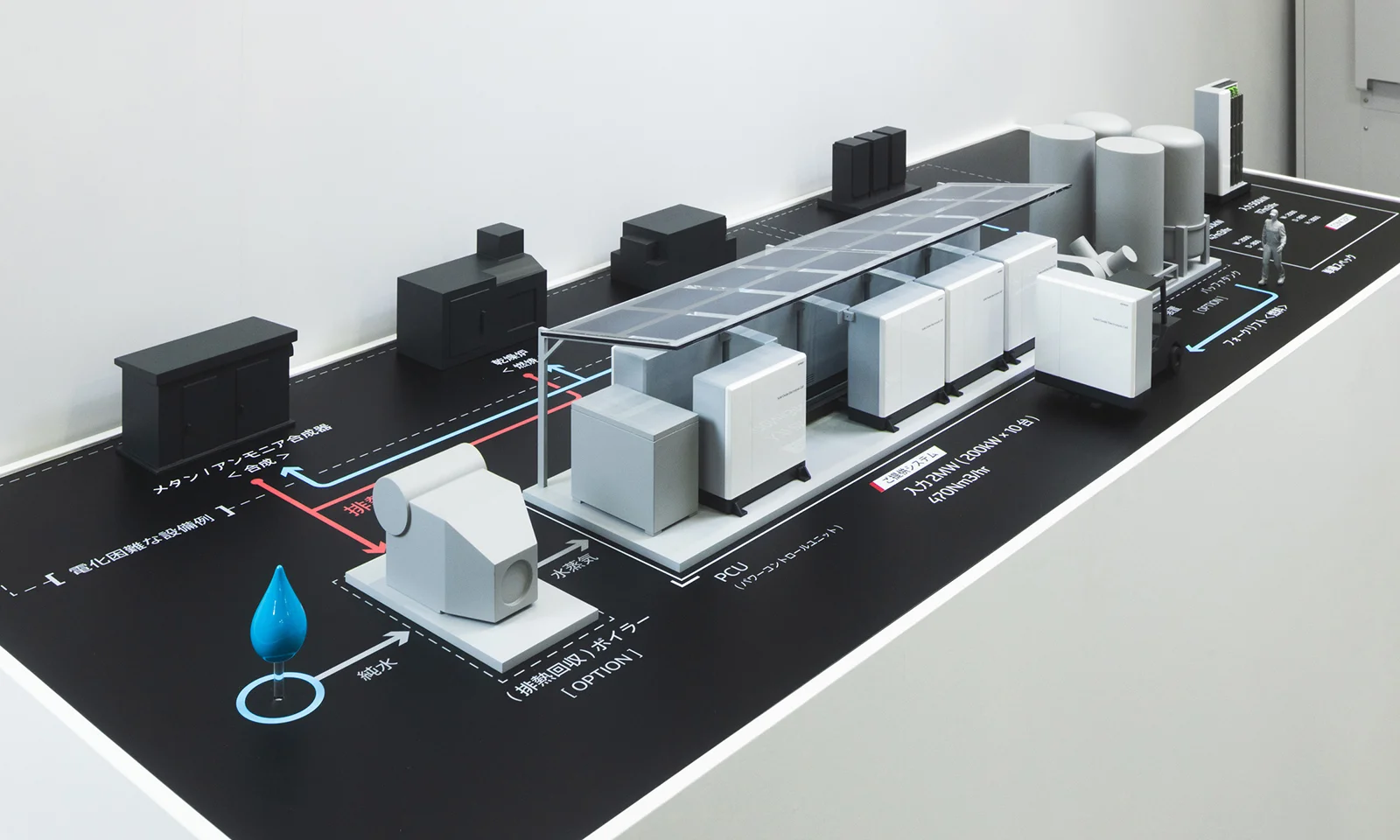
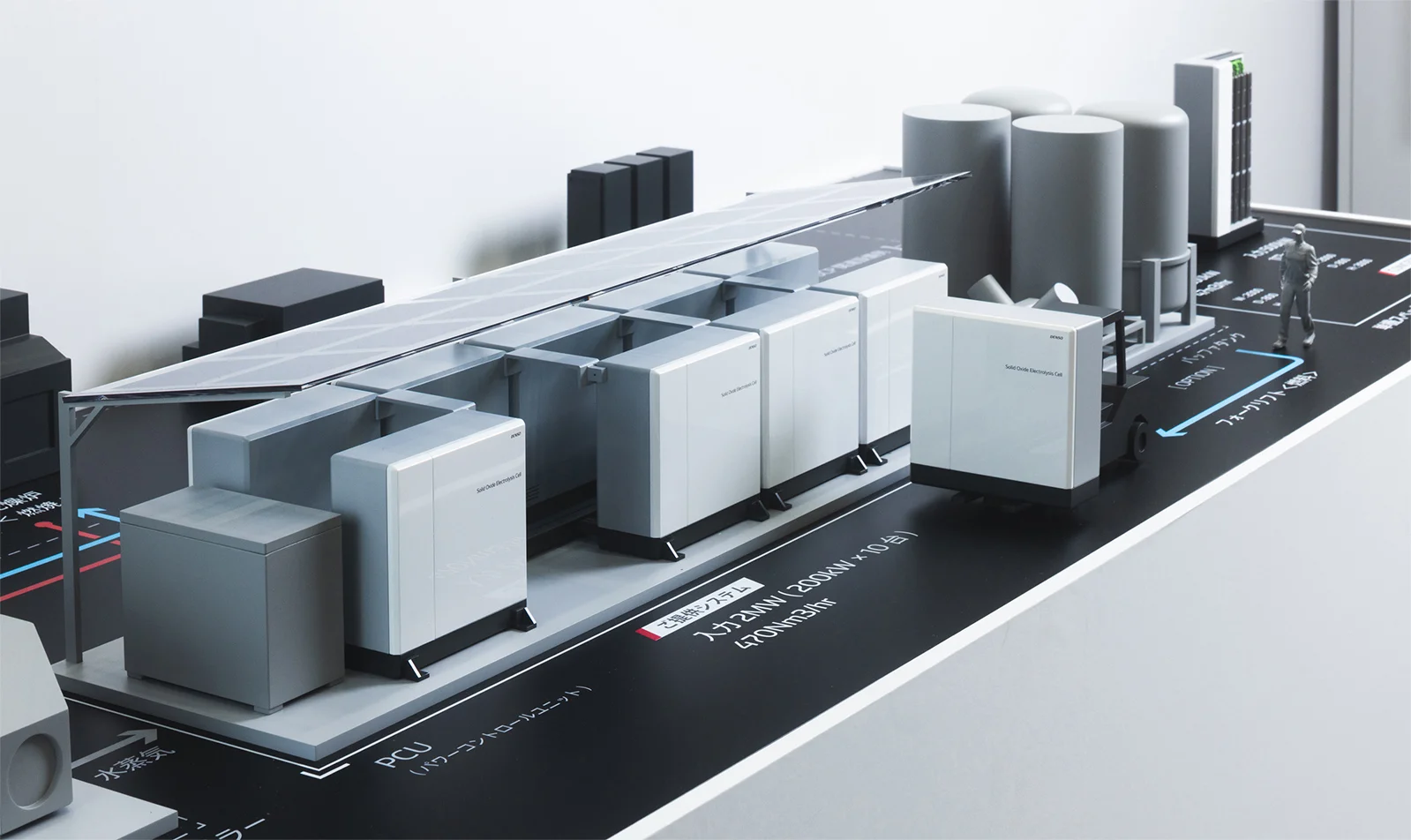
For details of the advantages and more about DENSO’s SOEC system, visit:
Utilizing hydrogen in factories
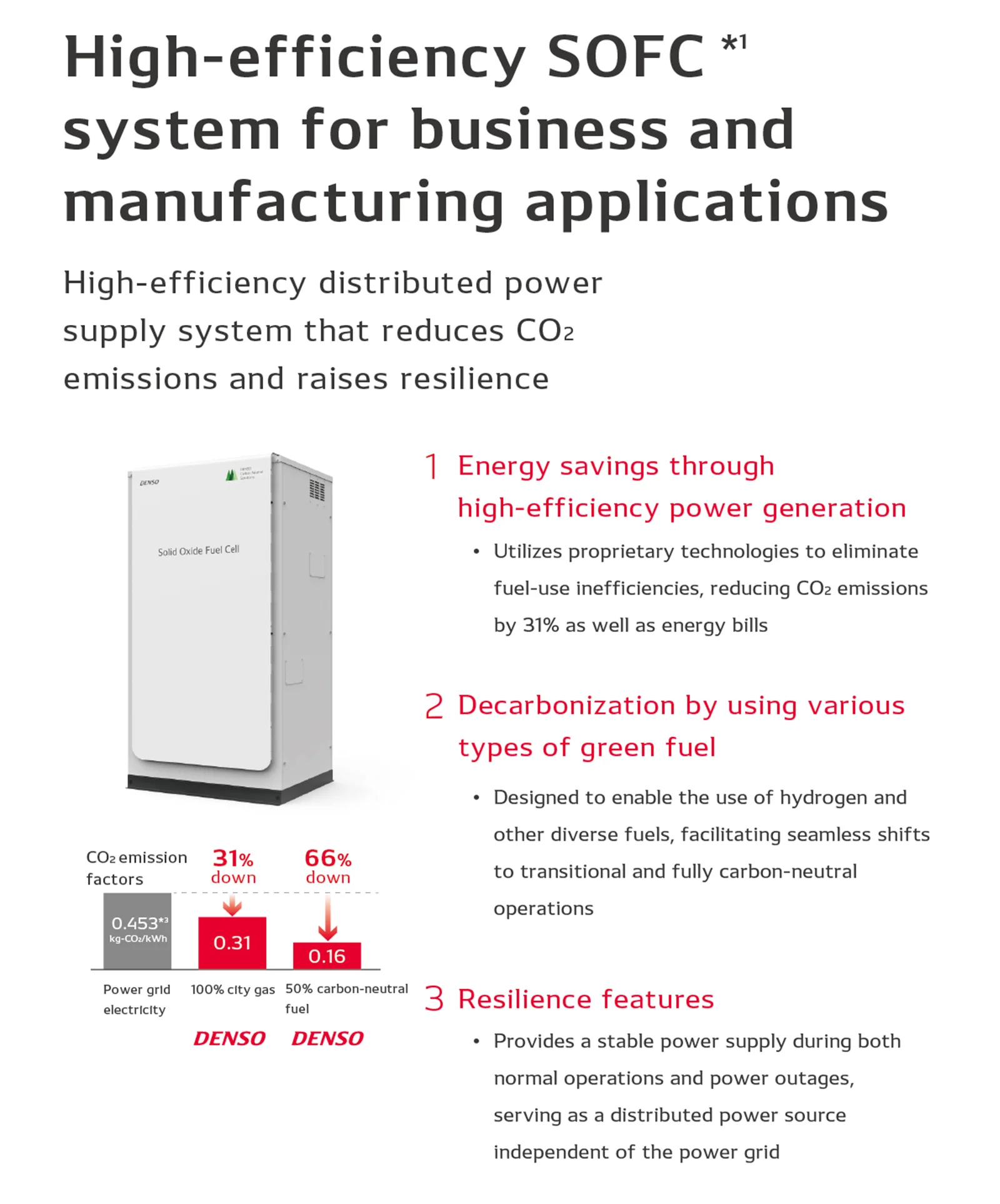
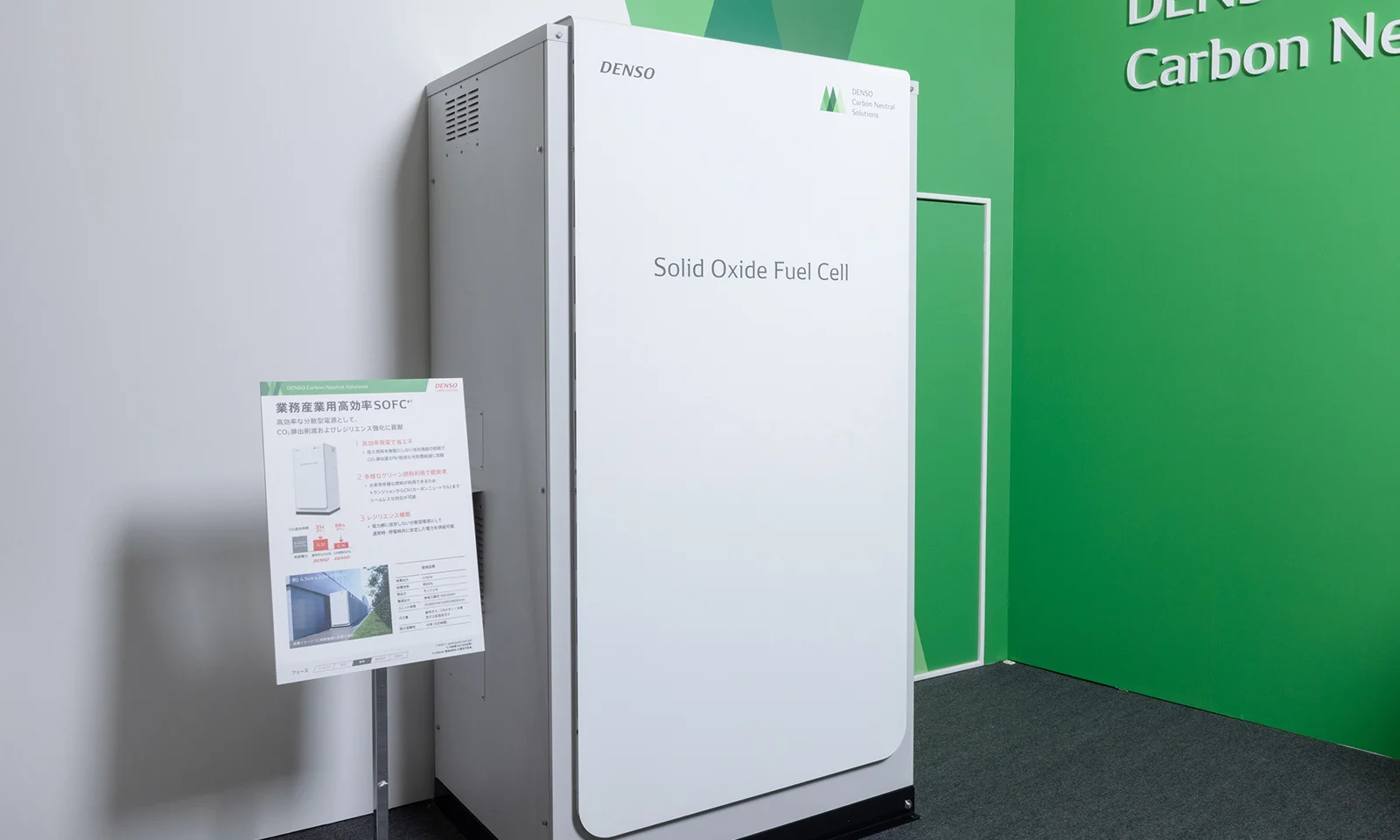
It’s also possible to generate electric power using the hydrogen produced by SOEC systems, and a solid oxide fuel cell (SOFC) system is used for that. Takamasa Osugi, who works on SOFC development, explained DENSO’s intentions at the exhibition.
“Efforts toward carbon neutrality in factories are accelerating, and entire supply chains are being decarbonized. SOFC systems have high power generation efficiency, and we’re offering them as one option to decarbonize factories.
This is the first time we have exhibited our actual SOFC. To build even better SOFC systems, we would like to directly listen to customers’ needs so that we can understand them better.”
DENSO’s SOFC systems and their strengths are described in greater detail in the following article:
Manufacturing-related products that promote decarbonization while improving productivity
Even if a factory uses renewable energy sources, or alternative energy sources such as hydrogen, the factory cannot be called “green” unless energy is used efficiently without waste. DENSO’s manufacturing-related products are designed to achieve green factories based on a range of different approaches.
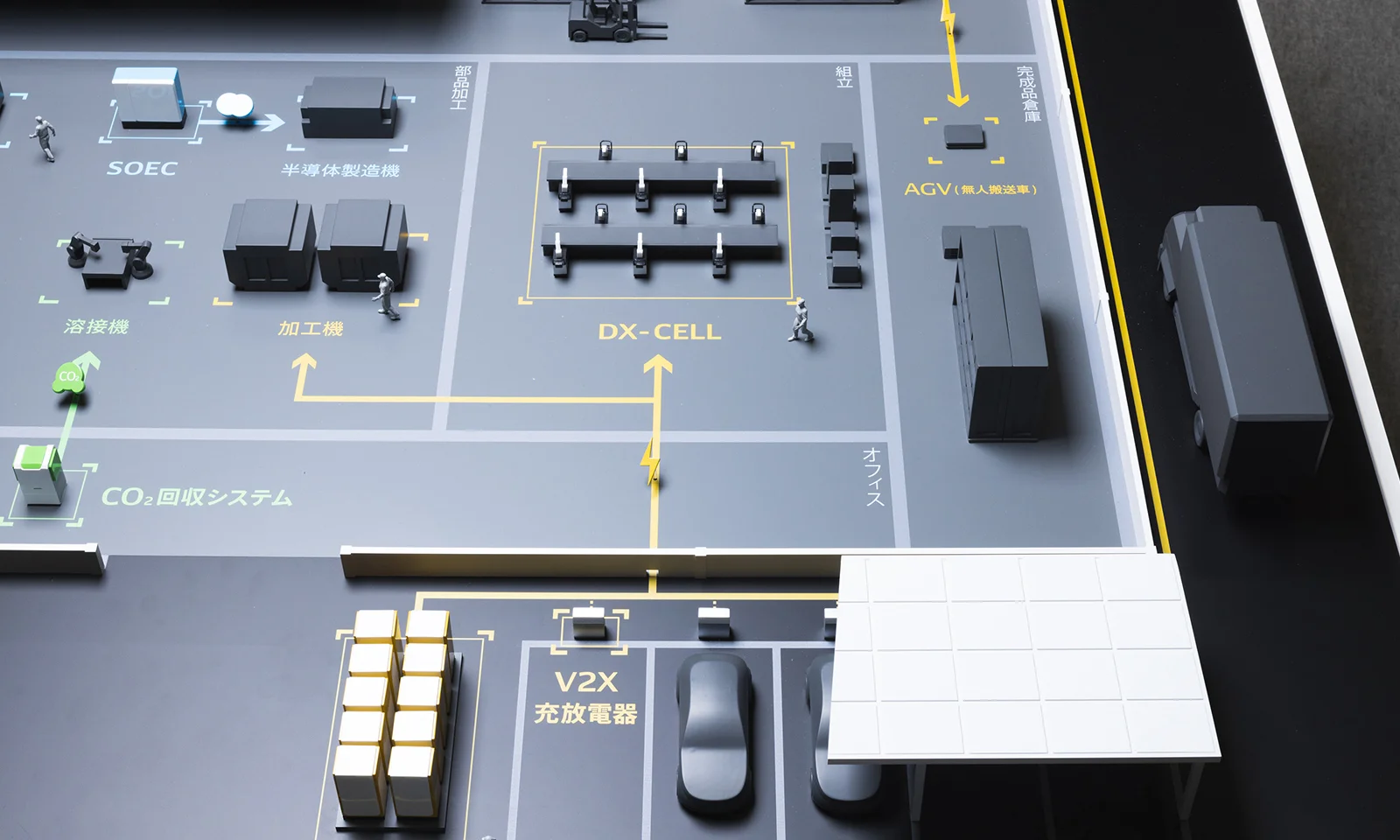
In the manufacturing-related exhibition area, DENSO exhibited three solutions: the DX-CELL automation platform, the COBOTTA PRO robot which enables collaborative human–robot operations, and IoT Data Share data integration software.
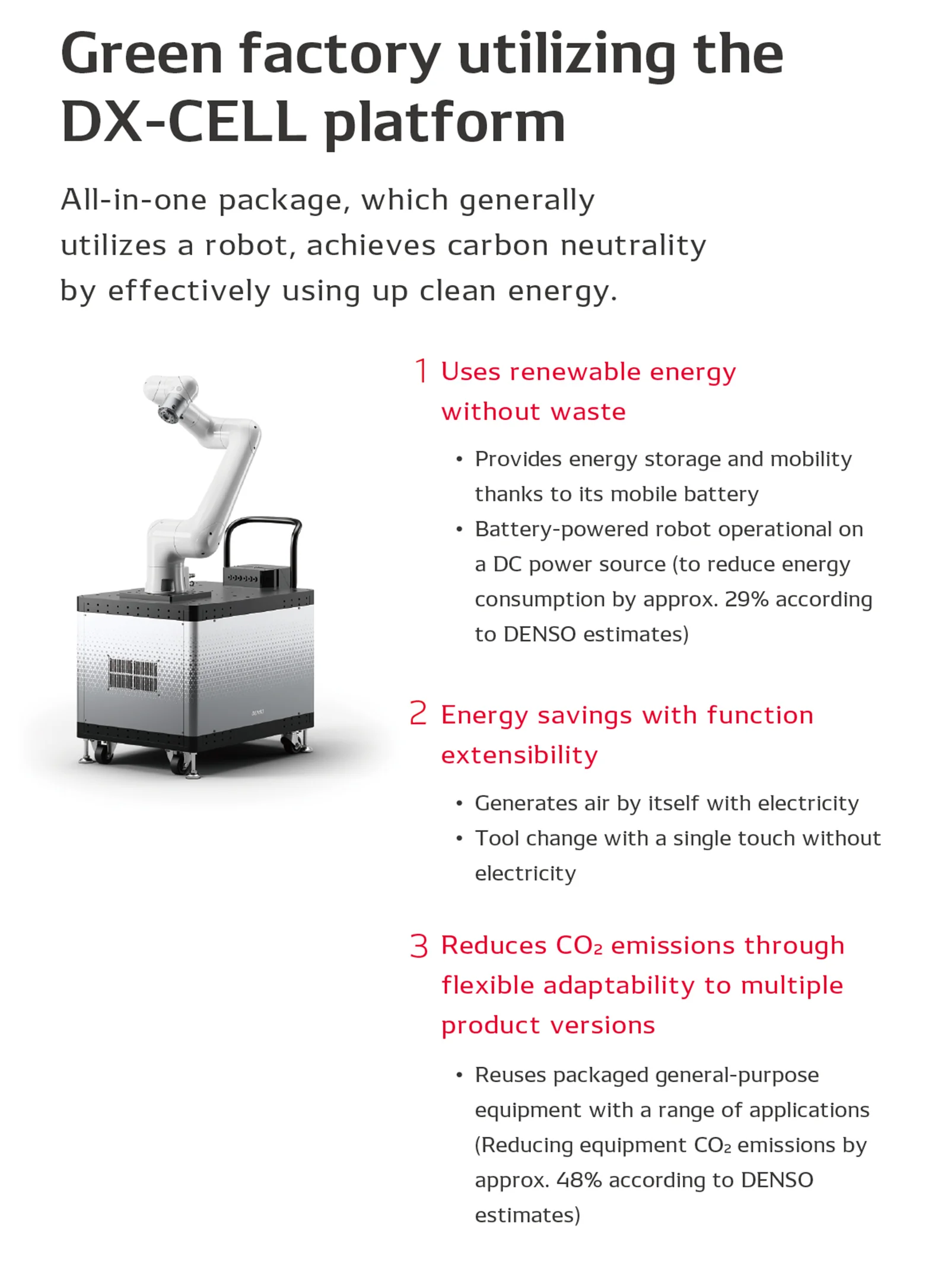
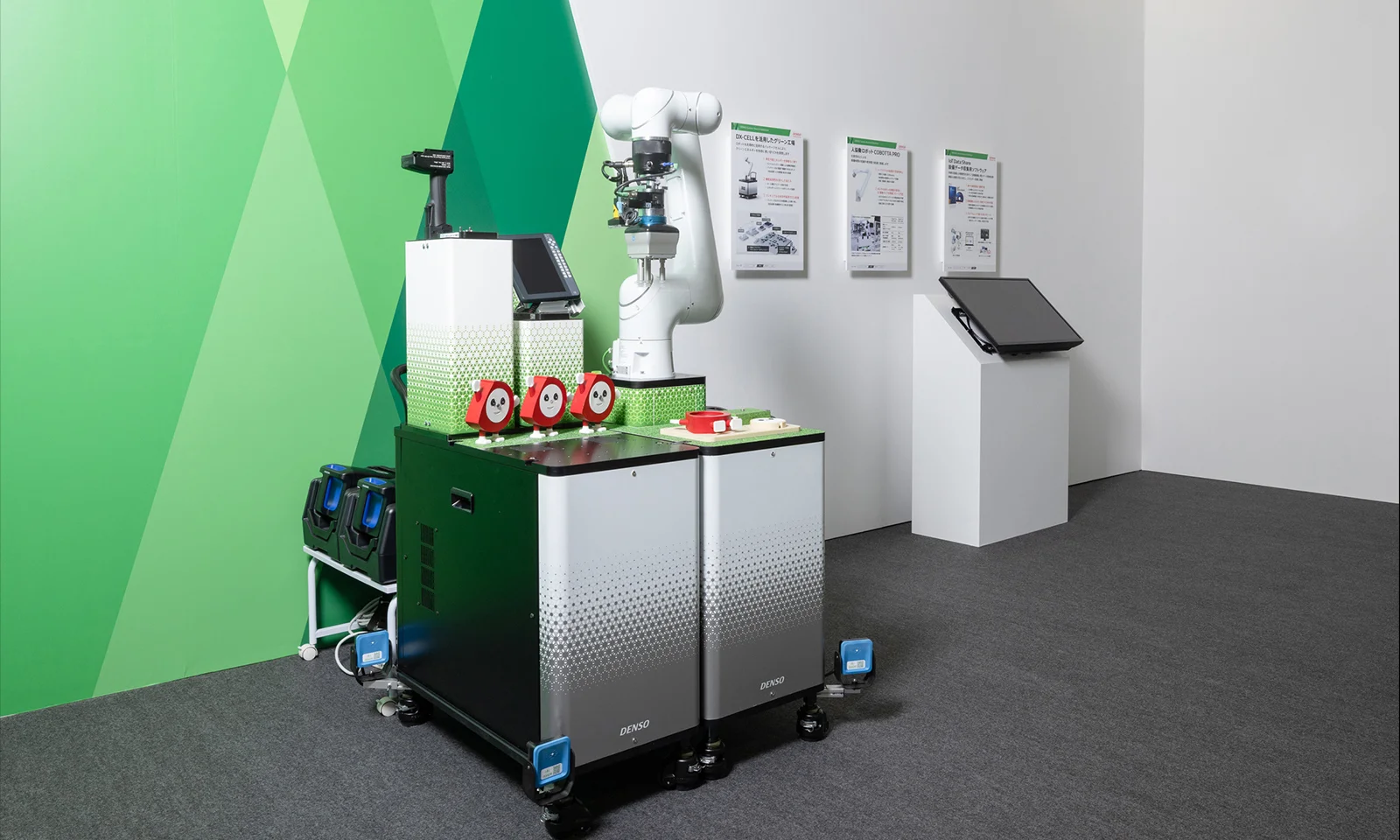
Cart-like lower parts of the machines shown in the picture above are DENSO’s DX-XELLs automation platform. Kota Ando of the company’s FA Business Development Div. described the product:
“DX-CELL is an automation platform designed to flexibly respond to the ever-changing needs of manufacturing worksites.
It can be integrated with robot controllers, power-source equipment, dedicated operational computers and other such equipment to enable production lines to be set up quickly and seamlessly.The greatest features of this product are its extensibility and mobility, enabling it to be used in many different manufacturing sites. At this exhibition, we showed one of their examples which has mobile batteries in it. It does not require wiring, and therefore it can be arranged flexibly in factories.
Furthermore, it can be moved easily like cart by workers, so it can be flexibly relocated in response to production-volume increases and decreases, new-model additions, and other such production changes.
That’s why this system is highly useful in factories where production lines are frequently changed for production of many models in small quantities.
And of course, we have designed it to be eco-friendly. It’s possible to reduce power-source-related losses in factory operations, because the DX-CELL can be reused as general-purpose equipment.”
The robot mounted atop the DX-CELL platform is the COBOTTA PRO collaborative robot, which is exhibited as a symbol product of the equipment. Collaborative robots are designed to operate in the same spaces as human workers without isolated by fences for safety, unlike industrial robots.
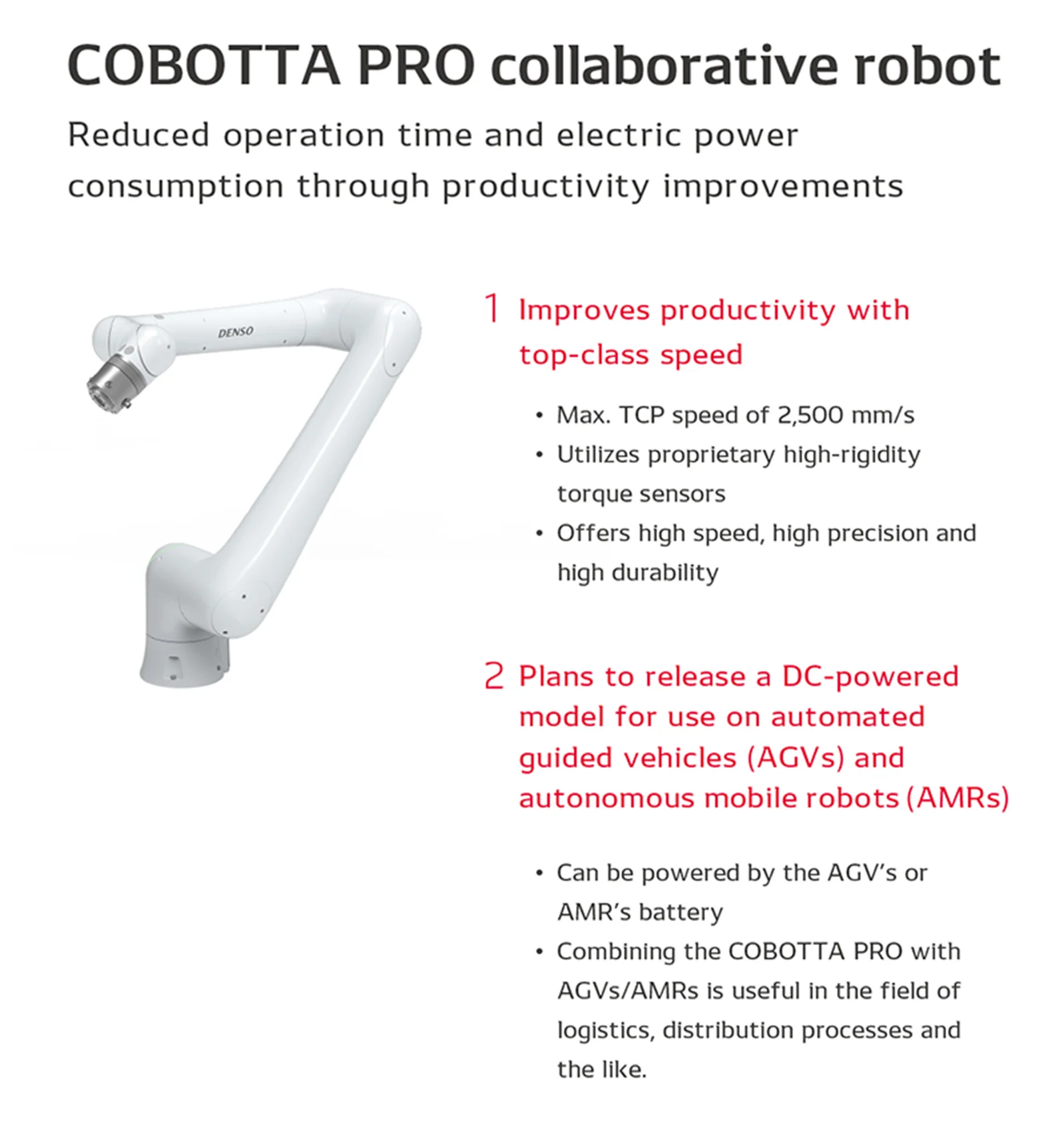
Naoyuki Fukuda of DENSO WAVE’s Sales Planning Division explained how the COBOTTA PRO has been further optimized for in-factory usage application compared with conventional COBOTTA.
“In order to make these products easier to operate, we have created a user interface for intuitive programming. Required commands are organized like a series of blocks.
As command blocks are available in programming only when they follow the programming rules, users can create programs without mistakes with the blocks.Moreover, it also can operate together with its peripheral equipment, it can be utilized for a range of tasks linking cameras, image recognition AI ant the like. We also plan to incorporate DC power sources into future models to minimize energy-conversion losses and make our robots eco-friendlier.”
The final manufacturing-related product shown at DENSO’s booth is the IoT Data Share data integration software.
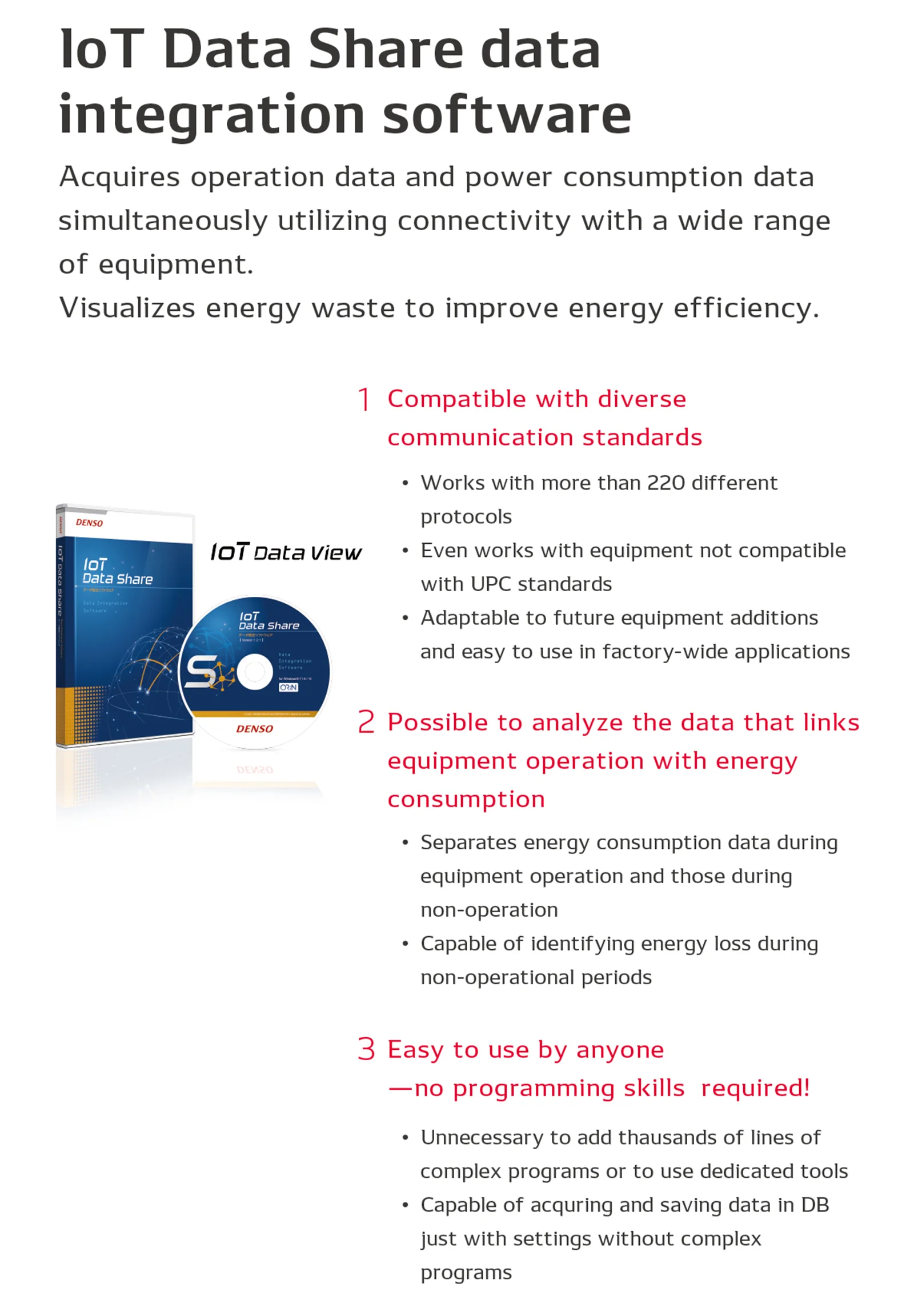
Atsushi Tano from DENSO WAVE’s Customer Service Division explained this product:
“IoT Data Share does not require programs but easy settings of selecting equipment to be connected from the pull-down in order to be connected with a wide range of equipment in factories, and to acquire, process, save, notify and publish data.
Acquired data includes that of electric power consumption. And because the software can acquire equipment status information at the same time, it can provide users with improvement suggestions through various insights. For example, it may point out that a certain device is using large amounts of electricity even when in standby mode.
Most industrial devices and equipment come paired with their own dedicated software. Because IoT Data Share can be linked to that software, it is easy to introduce it, and can also contribute to saving energy.”
Supporting efforts toward factory carbon neutrality depending on customer needs
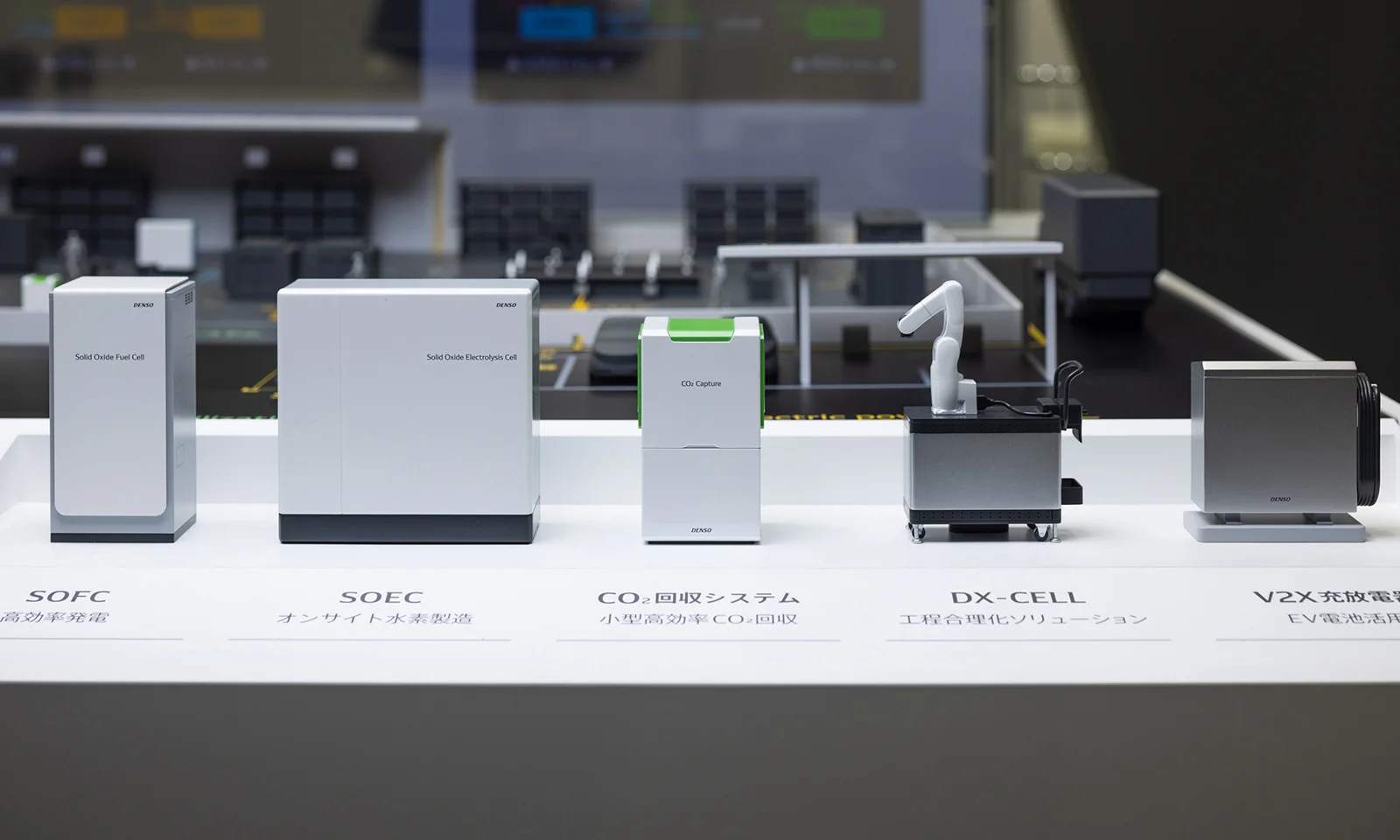
DENSO exhibited a wide range of products at the GREEN FACTORY Expo. By bringing these unique solutions together, the company is striving to meet all customer needs while helping them achieve carbon neutrality at factories.
Some of these products are still at the validation phase. As DENSO would like to work on validation with our customers, if you are interested in any of the products introduced in this article, please contact us.
REACTION
Changing your "Can'ts" into "Cans"
Where Knowledge and People Gather.

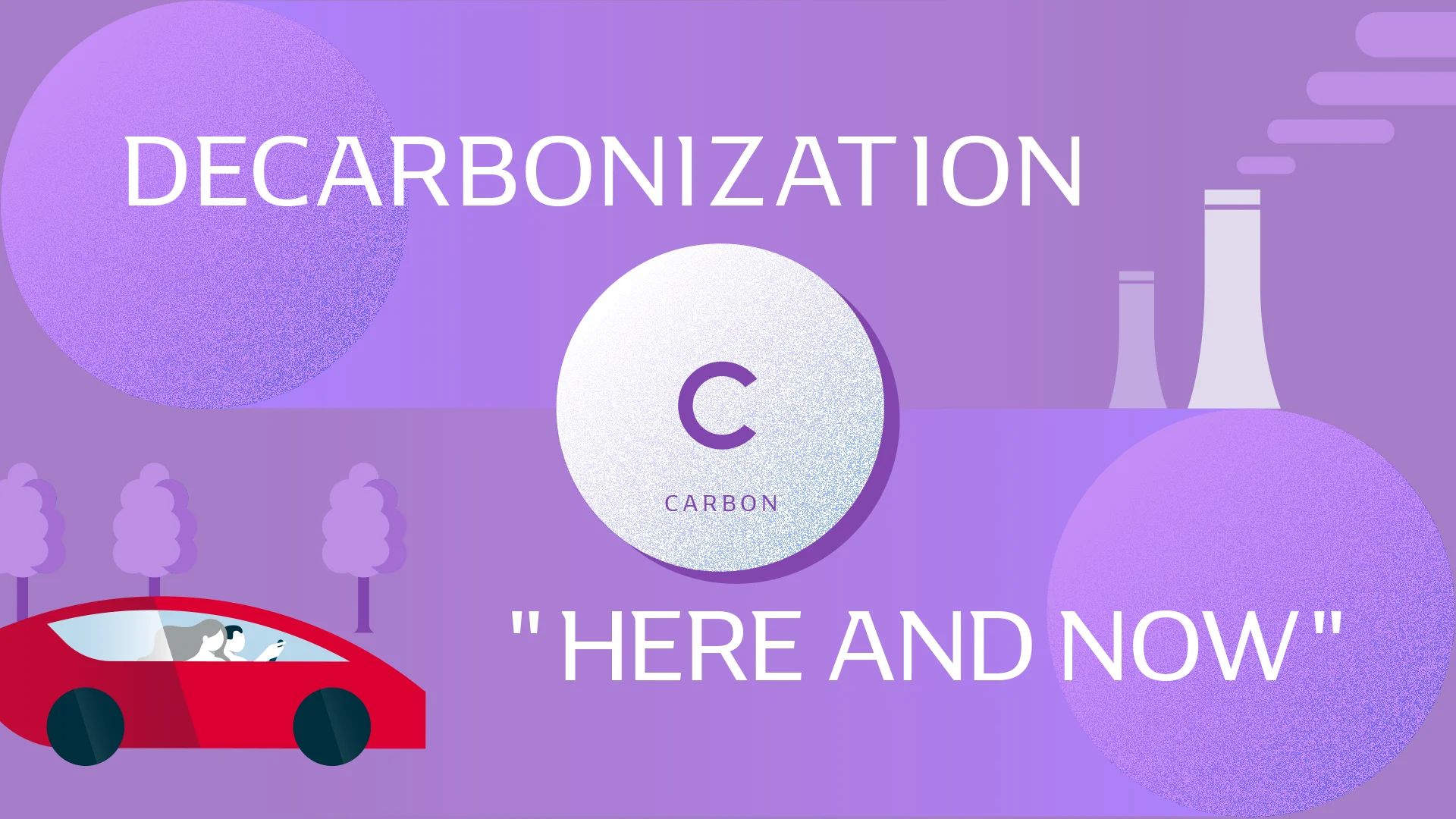

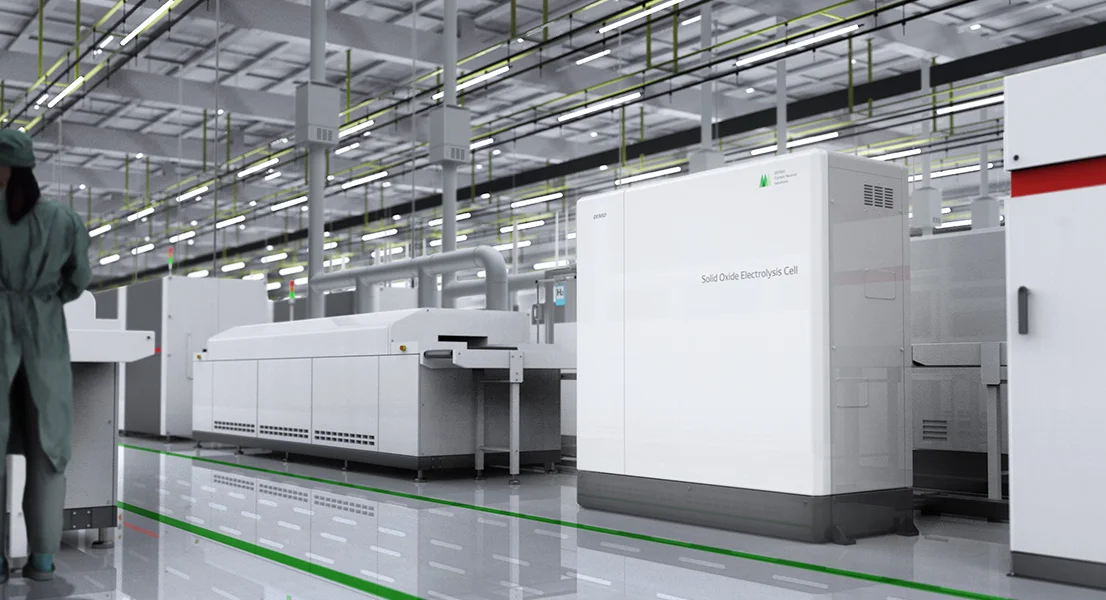

Leave a comment